Best Laying Hens – For Beginners, White Eggs, Brown Eggs
This post may contain affiliate links. Read my full disclosure here.
What are the best laying hens? The answer will vary, depending on your needs. First, ask yourself some basic questions: What is your purpose for getting chickens? Do you primarily want a good source of eggs? If so, how many eggs do you want in a week? What egg color do you want? Will your chickens be more like pets than working livestock? Do you want a dual purpose breed so that you get a little meat?
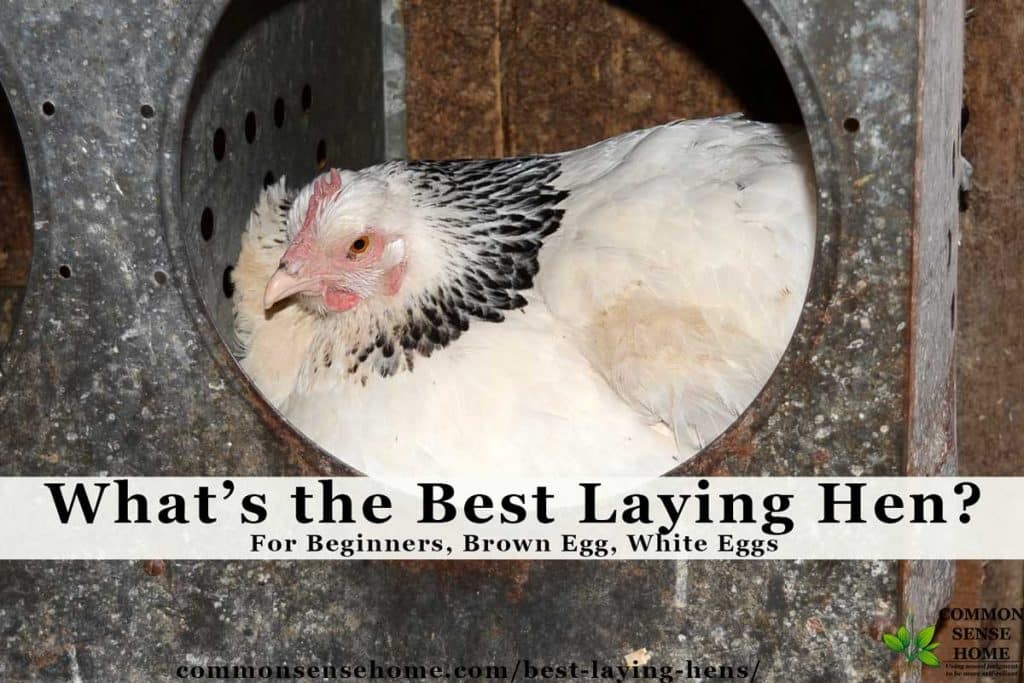
Chickens come in all shapes, colors, and sizes. They also come with differing innate abilities to produce eggs!
If you want sturdy hens that produce a LOT of eggs, sex-links are the way to go. These birds were bred carefully by the various hatcheries over time to maximize the vigor and productivity a small farmstead would need. If you want dual purpose birds, or want to breed your own laying hens, other breeds may be a better fit.
Table of contents
- Best Laying Hens for Beginners
- What are the Best White Egg Laying Hens?
- What are the Best Brown Egg Laying Hens?
- Best Meat and Egg Laying Chickens
- Dual Purpose Chicken Breeds
- Which Chickens Lay the Best Eggs?
- Where to Buy Laying Hens
- Breeding Your Own Laying Hens
- What About Bantams for Egg Laying?
- Common Poultry Terms
- Should I Start with Chickens or Eggs?
- What About Duck Eggs?
Best Laying Hens for Beginners
My recommendation is to begin your flock with sex-links. These are readily available, lay well, have a good disposition, have hybrid vigor, and are reasonably priced. When we started, we alternated getting a different color of sex link each year. That way, we could tell the age of the bird by color. A rotation of Isa brown, black sex links, and rounding off with DeKalb ambers made a colorful flock in the yard and gave us confidence when culling.
What are the Best White Egg Laying Hens?
For white eggs, a cross that is based on leghorns is the standard. The most common of these is the California white, produced by mating a California Gray (which was never recognized as a breed and is thus fairly rare) male over a white leghorn hen. The resultant female chicks are excellent producers of white eggs with a somewhat better temperament than a simple white leghorn would be.
My dad used to relate stories about his mother’s egg route. Every year, they would get in a batch of leghorns for laying. These were only available as straight run.
Leghorns are known for their ‘lively’ personalities. As the males began to cause troubles, they would be butchered for ‘Sunday dinner’. The kids did not like the job of picking eggs because leghorns do not like someone messing with their nests. Consequently, we could never have chickens when were growing up!
What are the Best Brown Egg Laying Hens?
The BEST brown egg layers? Hands down, eggs-perienced chicken people go for the sex links. I call them my work horses. It seems to me that historically, each hatchery developed their own particular cross from slightly different parent lines.
Red stars, Red Comets, ISA browns, and DeKalb ambers are some of the names. All of these sex links use either Rhode Island Reds or New Hampshire Reds as the males crossed with a light female such as a Delaware, Wyandotte, white rock or a Rhode Island white. Black sex links can also be produced by crossing the same males over barred females such as the Barred Rock.
With sex link chickens, male chicks are one color; females are another. This means that there is no need to hire special personnel to divide the sexes. This saves the hatchery time and money. It means that you can be confident that those chicks you get WILL grow up to fill your egg cartons and not a frying pan!
Any of the sex links can be expected to begin laying before six months and to produce 270 to 320 eggs per year. They will lay for longer stretches, be more cold tolerant, and have shorter episodes of molt than their purebred counterparts. My personal vote? Isa Browns!
Best Meat and Egg Laying Chickens
Looking for a dual purpose bird, one for meat AND eggs? Regretfully, there is not one breed that has it all. The better the meat production, the less adapted to laying or the higher the cost to maintain body weight, thus increasing the cost of their eggs.
The better layer birds are too light to produce your Sunday roasted chicken. If you are willing to concede this, there are some breeds that are a great addition to a homestead.
Weed out the extremes! The Jersey giant sounds wonderful for meat, but it takes months to achieve the big size that fits its name– months that result in a tougher bird, and the egg production is only 150 to 200 eggs per year.
The Mediterranean breeds are good layers — leghorns, Anconas, Andalusians — providing as many as 300 eggs per year, but their body size is too small to be worthy of that frying pan.
Dual Purpose Chicken Breeds
Virtually every breed has its defenders. Our experience in looking for that balance between meat and egg production also take into account rate of growth and carcass quality. My husband was trained as a federal meat grader, does our butchering, and is picky!
He likes Ameraucanas, naked necks, and a new one to us, the Chantecler and its crosses. We have had many of the others, including purebred Rhode Island reds, New Hampshires, Cochins, Brahmas, buckeyes, Australorps, etc.
For dual purpose, experiment with the mid-sized breeds such as any of these mentioned.There standard weight will be 6 to 8 pounds. There is no one perfect bird for every homestead. Look for a breed developed in a climate similar to yours. Take personality into account.
For example, Lakenvelders are aggressive foragers, lay fairly well in their first year, and are absolutely stunning out in the yard.That aggressiveness carries into a flighty nature, which is fine for adults but not for children. Apply common sense, and look at the price. That gorgeous lavender orpington may set you back $20 per chick or more, while its buff cousin can be found for a more reasonable price.
The old timers around here (northeast Wisconsin) told me that they always kept a flock of white rocks. The hens were fairly good layers, and some could always be counted upon to set a nest of eggs. The pullets were replacements, but the males made a nice carcass for a family meal.
As the demand for chicken meat increased, the Delaware was developed, primarily for meat. Within a few years, they were surpassed by Cornish rocks for the meat purpose, but some have found that the Delaware or any of the rocks are worthy homestead birds for eggs and meat.
Which Chickens Lay the Best Eggs?
Any well cared for chicken with access to forage will produce eggs that are far better than the average supermarket egg. As mentioned above, sexlink laying hens produce the most eggs, but other breeds also make solid laying hens.
Would you like to save this?
When you are ready to mix things up, then I would buy some of the purebreds. You can buy a baker’s dozen through a hatchery assortment or get a better feel for personality and production characteristics by buying several of each breed, such as 4 cochins or 4 Ameraucanas. Landscaping with chickens is like gardening– you can learn as you go. As you become a crazy chicken person, you will begin to decide which breeds best fit your homestead and your heart.
If a smorgasbord of colors, shapes, sizes and personalities is your goal, then grab a copy of your favorite hatchery catalog and pick some that attract your eye. BUT be warned that the pure breeds almost always lay fewer eggs– 250 or less per year.
They lay smaller eggs than the sex links that begin lay with medium eggs and quickly move to large and extra large in size. They will protest winter with fewer eggs in the cold; in my observation, the more the breed is billed as a heritage bird, the longer it will take to begin laying again in spring!
Where to Buy Laying Hens
Sourcing your birds will become important when you make the jump to selecting breeds for more than just eggs. In the poultry world there are three camps– the exhibition world, the production world, and the hobbyists with one foot in both of the other two.
Typical hatcheries are selecting for production characteristics. These are good healthy birds and may even produce more eggs than their exhibition counterparts. The downside is that their color patterns will be less than precise and their body form may not match the Standard of Perfection. The exhibition world breeds according to that Standard, ruthlessly culling to achieve a blend of form and color.
In any given year, a breeder may produce only one truly show-worthy bird. This is expensive AND not for the faint of heart. The backyard hobbyist loves all their birds, but can make great strides to improve their bloodlines with careful selection of breeding stock, purchasing from the exhibition world for new genetics.
Some poultry hatcheries now offer older birds that are almost ready to start laying, called started pullets. These started pullets are 15-22 weeks old. This allows you to purchase your birds, get them settled in, and have them start laying shortly thereafter. If you’re in a hurry for eggs, this may be a good option. Keep in mind that near adult laying hens will be much more expensive than chicks.
You may also be able to find someone local who has chicks or egg laying chickens for sale. Feed and farms stores often carry chicks for sale at some times of the year.
Breeding Your Own Laying Hens
One goal with your flock may be to allow natural reproduction, and setters can be highly valued. I discovered that if your flock is just one breed, and that breed tends to set, your egg production is going to go way down– when they all go broody at once!
Unless you have plenty of spots to keep them happy, they will compete to set the eggs with the resultant jostling ending in broken eggs and no chicks nor any eggs in the cartons! (You can seed nest boxes with ceramic eggs to encourage the girls to spread out.)
Becoming a breeder requires further research of the breeds. Some of the Eastern European / Scandinavian breeds of chickens –really any of the breeds in high demand– can become your specialty. Pay attention to birds that are true to breed characteristics in color and form so that hatching eggs or purebred chicks can become a source of income.
Easter and Olive eggers specialties is in great demand at the moment. The novelty of a range of egg colors from blue to green to olive are achieved by crosses of Ameraucanas with a number of other breeds. These are not purebreds, but always sell out quickly. The Small Scale Poultry Flock is an excellent resource for establishing a breeding flock the right way and keeping bloodlines strong.
What About Bantams for Egg Laying?
Bantams are not a breed, but lovely miniature birds similar to their large fowl counterparts. The exception to this is a few breeds that are truly bantams (silkies, sebrights). As such, they lay miniature eggs — small to medium, depending on the breed.
They need less space and eat less feed as well. Some breeds such as the sebrights are not very cold tolerant. Others such as the silkie or cochin do well in the cold, but they are not known as good layers. The silkies and cochins are great setters, and some homesteaders seek these breeds just to set the eggs of their other breeds.
Common Poultry Terms
- Pullet – Young female bird, less than a year old
- Hen- female bird, older than a year
- Cockerel – Male, younger than a year
- Cock or rooster – male, a year plus
- Straight run – a mix of sexes that is basically what nature provides, roughly 50 / 50 males and females.
- Bantam – small breeds of birds, some which are basically miniatures of large fowl chickens (leghorns, cochins) and some which come in bantam only ( Sebrights, silkies)
- Sex links – The genetics for plumage color are tied to the sex chromosomes. Therefore, males and females have different color upon hatch.
Should I Start with Chickens or Eggs?
What came first–the chicken or the egg? Despite this old joke, if you want eggs in a timely manner, the chickens had better come BEFORE the eggs. It is fun to begin with tiny, peeping chicks, but egg laying does not commence for at least five months. Plan accordingly if you are on a timeline for egg production.
What About Duck Eggs?
Although less popular than chickens, keeping a ducks for eggs is another option. Ducks tend to be messier than chickens (they love water), but won’t dig up the garden like chickens. Some people who don’t tolerate chicken eggs can eat duck eggs without issue.
Some of the best duck breeds to raise for eggs include:
- Khaki Campbell
- Runner
- Buff
- Welsh Harlequin
- Magpie
- Ancona
Are you ready to start your laying flock?
I hope you’ve found the post helpful and are ready to find the right laying hens for you. We have other chicken resources on the site, such as “What to Feed Chickens” to help you select the right chicken chow.
The Quick Lock Chicken Door will help protect your ladies in the coop. Getting Started with Meat Chickens provides tips for bringing home your new batch of chicks.
If you’re new to chickens, Raising Chickens covers the basics. How to Raise Chickens Cheaply is good for those on a tight budget. If you’re concerned about disease transmission, check out 5 Strategies for a Healthier Flock.
What’s your favorite type of laying hen? Do you have any questions about a particular chicken breed? Leave a comment and let us know.
This post is by Debra Ahrens. Debra lives with her family on a five acre hobby farm in northeastern Wisconsin which she often describes as ‘short on hobby, long on farm’. Besides the School of Hard Knocks (Life), she attended UW-River Falls, majoring in Dairy Science. Along with her husband Jerry and their three youngest daughters, they raise every kind of domestic poultry known to man, and maybe a few that shouldn’t be known. Their furry animal family includes a flock of Suffolk sheep, dairy goats, a few rabbits, their dog and a lone beef heifer, Thelma. In her spare time, Debra is a poultry and sheep project leader for Kewaunee County 4-H.


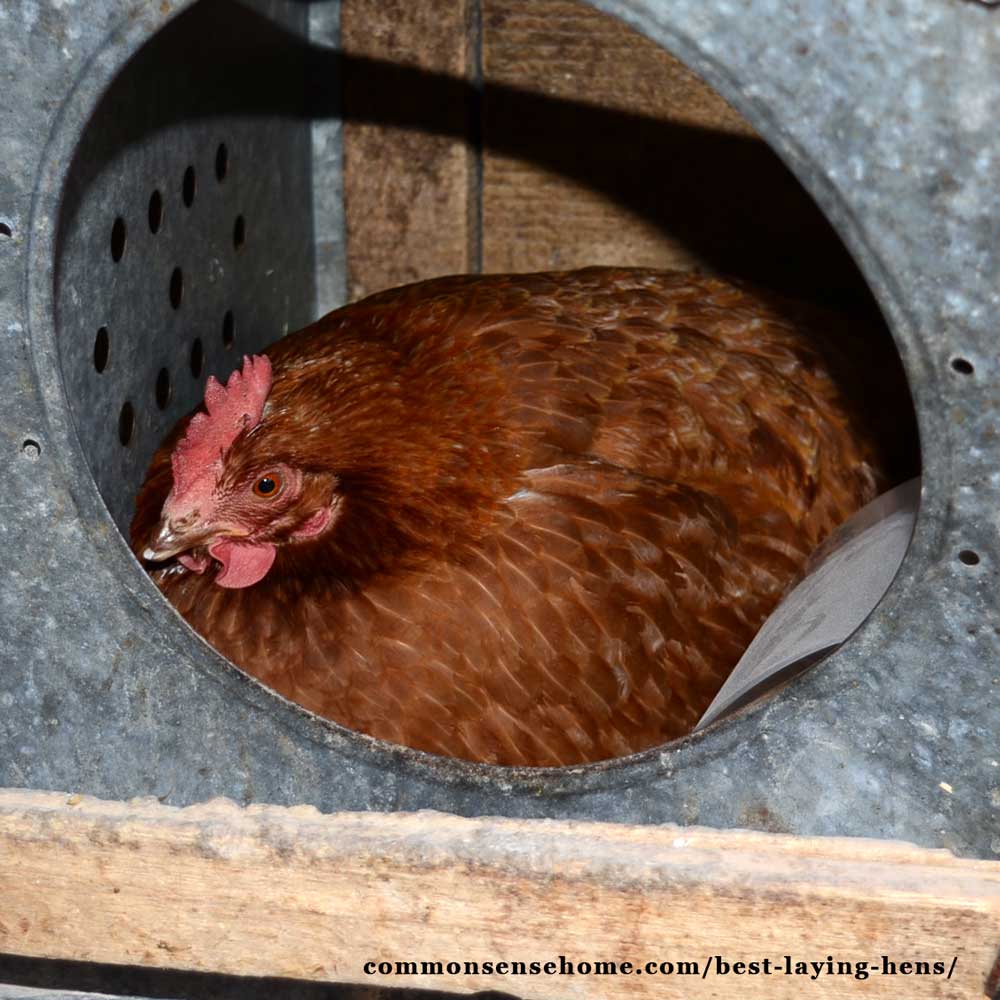
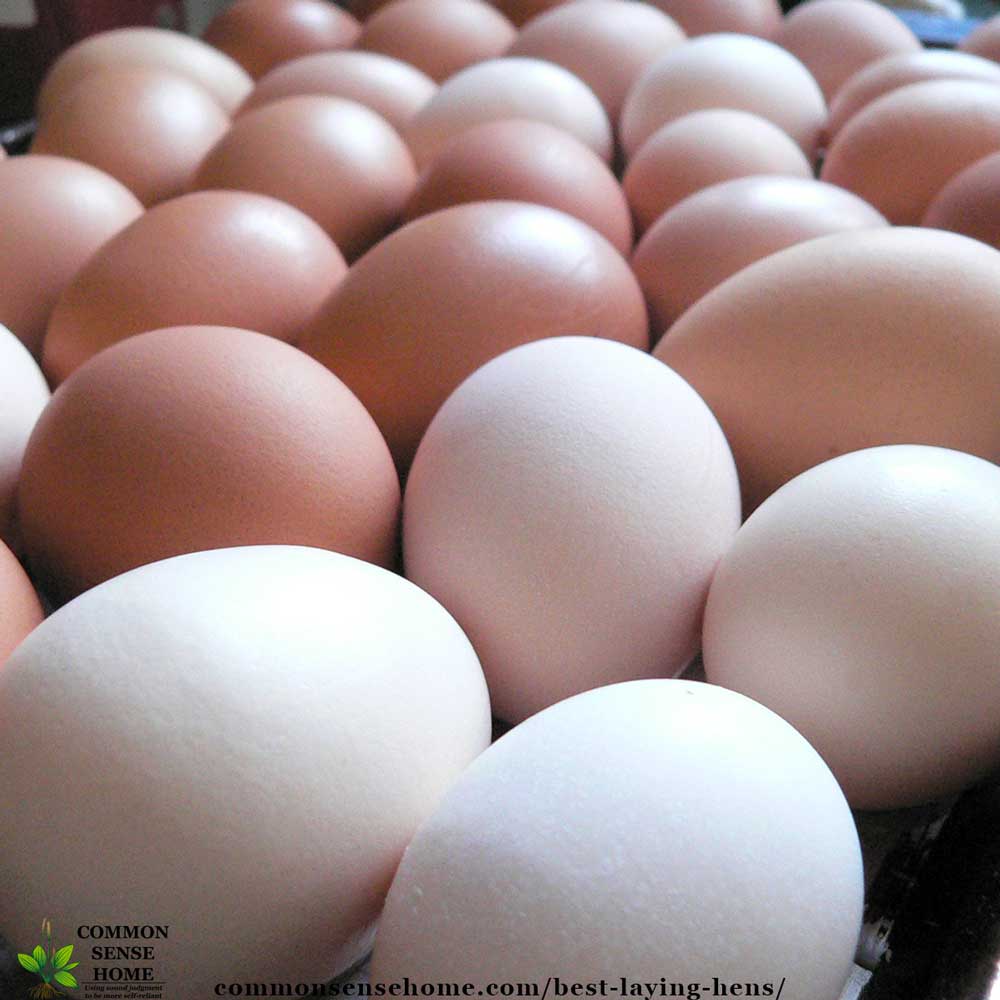
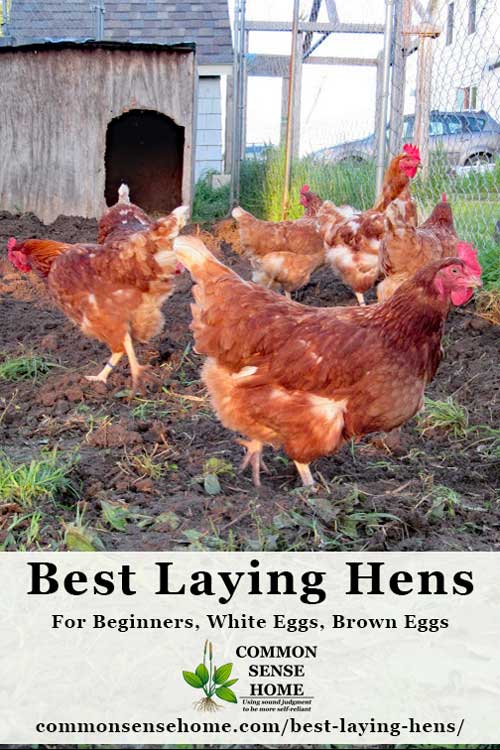
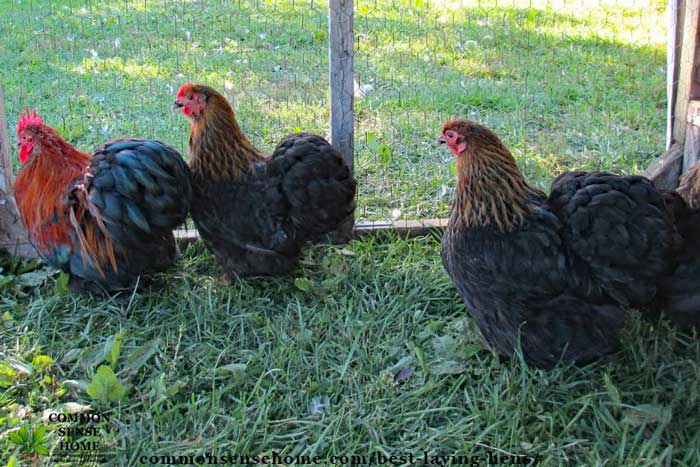
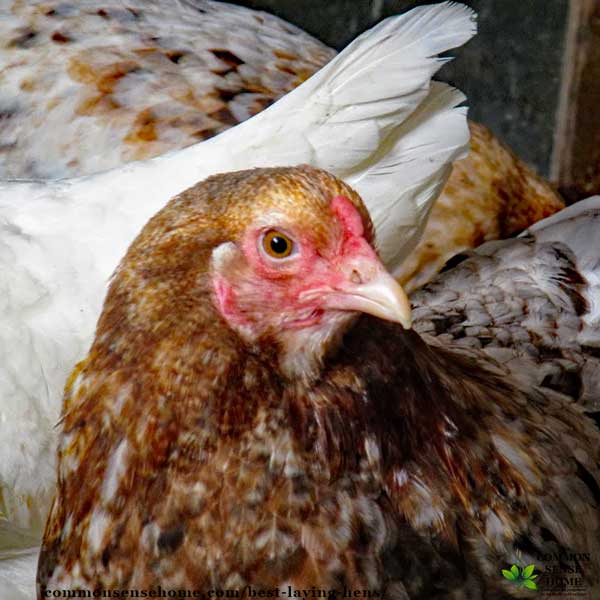
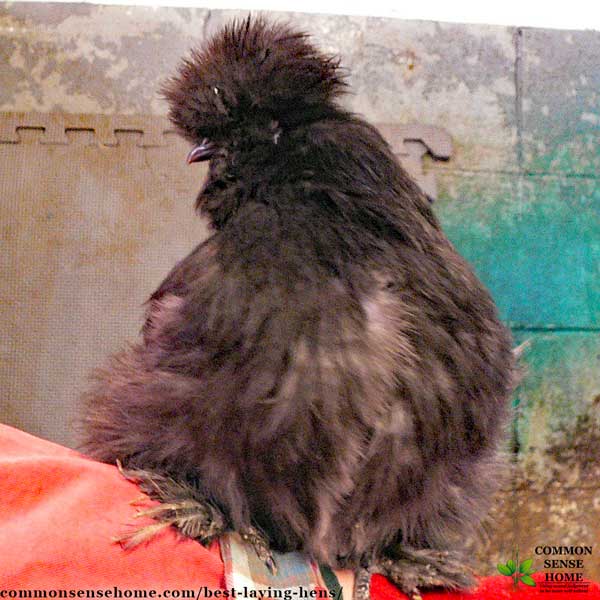
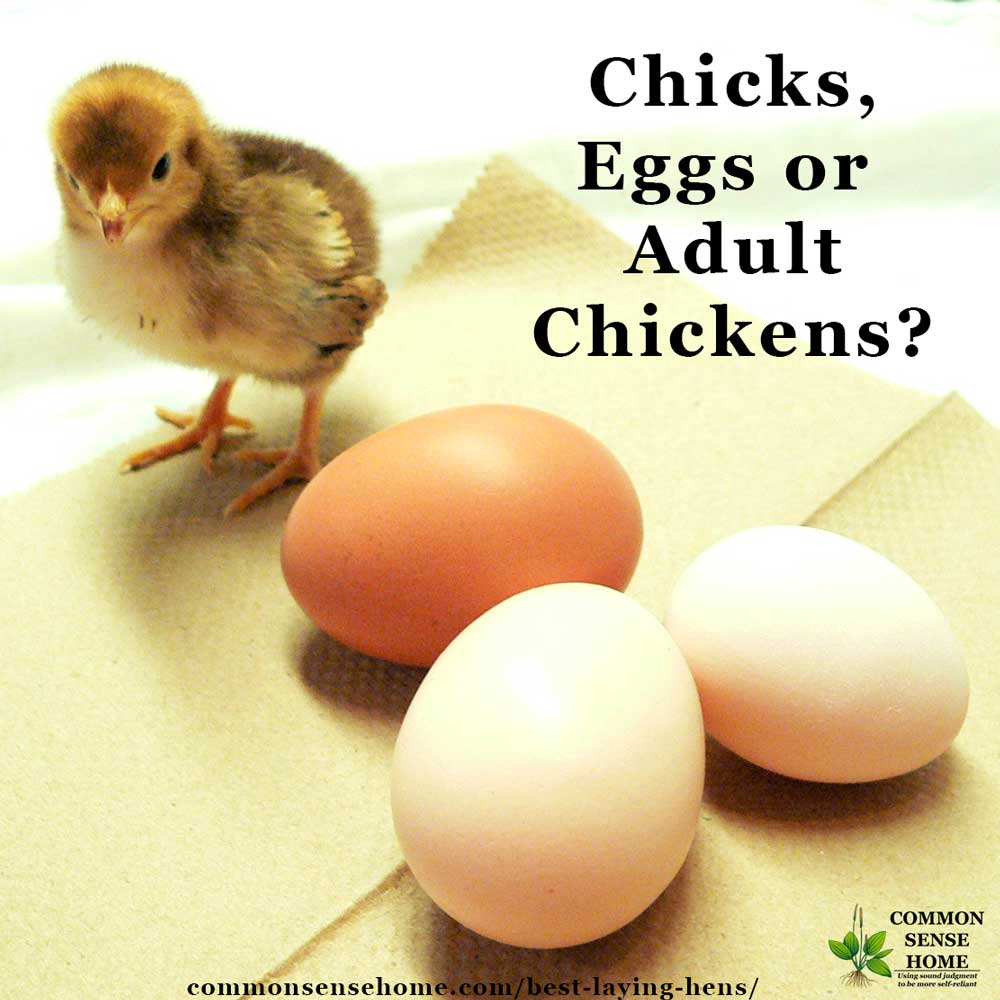

Any suggestion for a brown egg layer that will continue laying when fed comfrey? Comfrey is supposed to have a perfect protein content (22 to 33%) for chickens but our Barred Rocks and Buff Orpingtons just shut off and won’t lay unless fed lots of meat scraps or expensive grain/feed. Thanks!
I know Harvey Ussery has been working with Icelandic chickens, and has been happy with their ability to thrive on forage. He talks about his flock care techniques in his book, The Small Scale Poultry Flock.
I asked Deb about your question, and she noted that the comfrey may be difficult for the birds to digest, and sent this link – https://hort.purdue.edu/newcrop/afcm/comfrey.html:
I want hyline breed or longman. All lay brown eggs, what are the defferent between them, how much per chicken
Sorry, we do not sell chickens. You would need to contact a hatchery for pricing.
Thank you for the good information. The chicken breed I will always love; Dominiques, dual breed, good meat, brown eggs, good foragers, and excellent broody hens that teach their chicks. 🙂
Thanks, Betty. They are pretty birds, too, and have been around a long time.
The information on this site really helps and is spot on. I have 6 red sex links. Held them and cuddled them when they were small. Now they expect it everytime I go into their coop. I’m happy to pet and hug each one. We put a Radiant Coop Heater in the coop that keeps them warm through the winter and they still produce delicious brown eggs every day. They are awesome layers. There’s never been any disappointing days. It’s been wonderful to know I have fresh eggs everyday and I don’t have pay such high prices for them at the store. We donate dozens at a time to our local Fire Department and give away dozens to friends and family. By the way, with only 6 chickens, I figured it wouldn’t hurt to name them. I say their name and they know it. Each has it’s own personality and they seem very happy with their environment. We say, “Hello Girls” everyday and they come a running. It’s been a fun, wonderful and exciting experience so far. I highly recommend the sex links, especially for small backyards.
Thanks for sharing your experience, Susan, and paying it forward with your extra eggs.
What a ton of good information you shared. Thank you very much. I have had lots of different breeds of chickens, I agree with you when it comes to sexlinks, you can’t beat them for layers . I have red sex links, they lay just like you said, it’s almost unbelievable but it’s true, mine will be 2 years old this coming fall. Thanks again!
It’s fun to have all the layers with different colored eggs, but I had another friend talk about (only half jokingly) it costing $20 a dozen for her eggs because she fed organic feed and the chickens laid so sporadically. Deb’s flock is extremely reliable and the egg quality is great – bright color, excellent tightness to the white and yolk. No eggs that immediately spread all over the pan from that homestead flock.
Lots of good information. Thanks!
You’re very welcome.